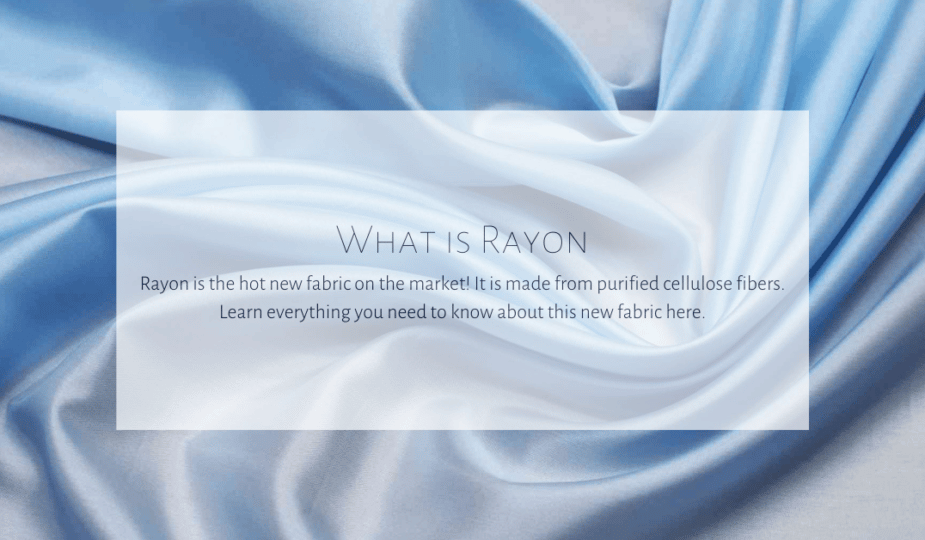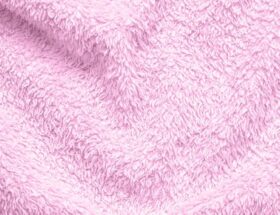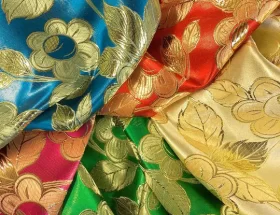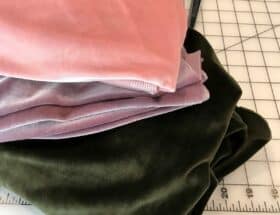Did you know that the global fashion industry is worth over $2.5 trillion?
This makes it one of the largest and most influential industries in the world. As technology advances, clothing becomes more comfortable and easier to manufacture.
One of the most notable materials used during manufacturing is rayon. But, what is rayon?
We've put together a detailed guide that has all of the information you need to know. Let's dive in.
So, What Is Rayon?
Rayon is a semi-synthetic material that was first developed in the late 19th century. It is made from cellulose fibers like wood and cotton, which are processed and then spun into yarn or fabric.
Rayon has many fashion technology properties that make it an attractive choice for fashion designers: it's lightweight, breathable, wrinkle-resistant, and highly absorbent. It also has a softer feel to the touch than most fabrics, making it comfortable to wear.
However, rayon is not without its drawbacks. One of its main disadvantages is that it's prone to shrinking and fading if not properly cared for. Additionally, since rayon is made from synthetic materials, there are some concerns about its environmental impact and how it will affect someone's carbon footprint.
Despite these drawbacks, rayon remains popular with fashion designers and consumers alike.
Its versatility and unique properties make it an ideal material for a variety of garments and accessories. From high-end clothing creations to casual everyday wear, rayon is a go-to choice for many fashion designers around the world.
Rayon Fabric Guide
There are characteristics of rayon fabric that you need to keep in mind. These will dictate the type of results you get from it.
Here's what you need to know.
Weight
Rayon is usually lightweight and breathable, making it great for summer garments.
However, some heavier varieties can be used for winter wear as well. Otherwise, rayon fabric is generally medium-weight. So, it is unlikely that you will have trouble finding a rayon garment that can fit your needs.
This is true even for those who live in colder climates.
Texture
Rayon fabrics have a soft, smooth texture that feels great against the skin. It's also quite durable and resists wrinkles well. However, it can be prone to pilling over time if not cared for properly.
So, you must be attentive to the condition of your rayon government. It's the only way to ensure you get the most value out of your purchase.
Care Instructions
It's important to follow the care instructions on the label of your garments and accessories. Generally, rayon should be machine washed with cool water and a gentle detergent.
Hang dry or tumble dry on low heat to reduce shrinkage. Additionally, use a fabric softener to keep it soft and wrinkle-free.
Rayon that is mixed with other materials may have different care instructions. As long as you follow the label's guidelines, you shouldn't encounter issues in the future.
How Does Rayon Compare to Other Materials?
Compared to cotton, rayon is softer, more absorbent, and has a better drape. However, it's not as strong as cotton and can be prone to shrinkage and fading.
Additionally, rayon is not as breathable or durable as natural fabrics like linen or hemp. When compared to synthetics like polyester, rayon has the advantage of being more breathable, natural-looking, and comfortable to wear.
As previously mentioned, though, it can be prone to pilling with wear and tear.
In general, rayon is used to make high-quality, long-lasting clothing. For this reason, many people prioritize purchasing clothes made of this material.
Is Rayon Expensive?
Rayon is generally an affordable fabric option. It's usually priced lower than natural fabrics like silk and cotton, but more expensive than synthetics like polyester and nylon.
Ultimately, prices will vary depending on the type, weight, and quality of rayon you purchase. This means that the price you pay will heavily be influenced by the provider you work with and what you intend to do with the material.
How Can I Use Rayon as a Fashion Designer?
Rayon is a versatile material that can be used for a variety of fashion designs.
Its lightweight, breathable properties make it ideal for summer clothing such as dresses and skirts. It also has a soft feel to the touch, so you can use it for more formal occasions like workwear and evening wear. Rayon is also great for creating flowy, relaxed pieces like blouses and pants.
Lastly, you can use it for accessories such as scarves and handbags.
Can I Mix Rayon With Other Materials?
Yes, you can mix rayon with other materials like cotton and polyester for a unique look. For example, you could create a dress that has an outer layer of rayon and an inner layer of cotton for added breathability and comfort.
Of course, you should ensure that you follow the proposed care instructions. This is the only way to ensure that your garment lasts as long as possible.
Can I Print on Rayon?
Yes, you can print on rayon using screen printing or digital printing methods. However, it's important to note that the dye may not always absorb evenly into the fabric and may fade over time.
Additionally, prints will not be as sharp or crisp on rayon as they are on other fabrics like cotton. This is something to keep in mind if you plan on customizing your clothes or if you own your own clothing brand.
More often than not, the best course of action is to let the material speak for itself. You should focus more on the silhouette, cut, etc. of the piece as opposed to what you print on it. This will go a long way toward helping you reach your goals.
What Are Some Common Mistakes to Avoid When Using Rayon?
When working with rayon, it's important to keep in mind that the fabric is prone to shrinking and fading. Always follow the care instructions on the label and never put your garments in the dryer. Additionally, be sure to pre-wash your fabrics before cutting and sewing them, as this will help reduce shrinkage.
Lastly, avoid pressing your garments with high heat this can damage the fabric. Unfortunately, this means that you should avoid using rayon garments with heat presses. Even if you only use a heat press for a brief period of time to press the design, you run the risk of damaging the integrity of the material.
Don't overlook this risk.
What Should I Look For in a Rayon Provider?
Unfortunately, not all providers are created equal. It's imperative that you take the time to research the company you work with if you are looking to purchase rayon material.
Taking a look at their past reputation will help ensure you find someone right for you. It's essential that you consider what previous clients have had to say. This will help you substantially when it comes to making a decision.
Industry experience is another factor that you should consider. Unfortunately, it's not uncommon for people to overlook this factor. Fortunately, reputable companies are proud to showcase their expertise.
If they haven't worked with people like you before, it's best to steer clear of them.
It's essential that you hire someone who understands your needs. Their billing structure is another important element to consider. For example, they might offer deals or wholesale prices if you purchase a large enough quantity.
From here, you'll know whether or not you need to adjust your budget. Depending on the scenario, this could save a substantial amount of money.
Are you able to easily communicate with them? Many people who order this material do so in bulk. So, they should be highly communicative in case you run into any issues during the shipping process.
If they seem to brush off your concerns, they aren't the right choice for you. More likely than not, you will be able to find a superior option by continuing research.
You Shouldn't Overlook the Potential of Rayon
Although the initial answer to "what is rayon" may seem complex at first, it's fairly straightforward. Rayon is an ideal choice for fashion designers and consumers alike.
It's lightweight, breathable, and wrinkle-resistant, yet still soft to the touch. Just be sure to keep the above guidelines in mind so you can make the decision that is best for you.
Want to learn more about what we can do? Be sure to reach out to us today and see how we can help you.



